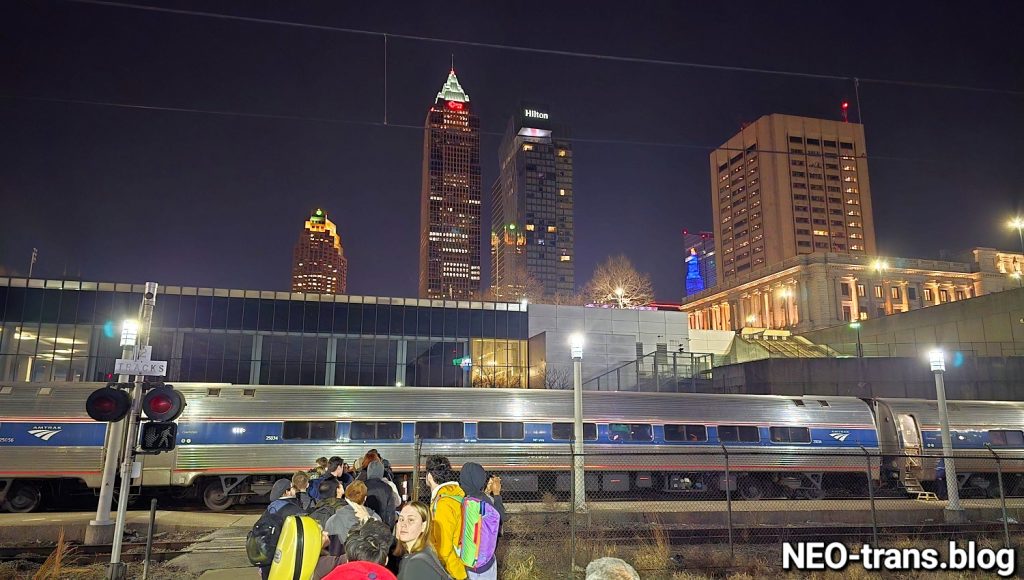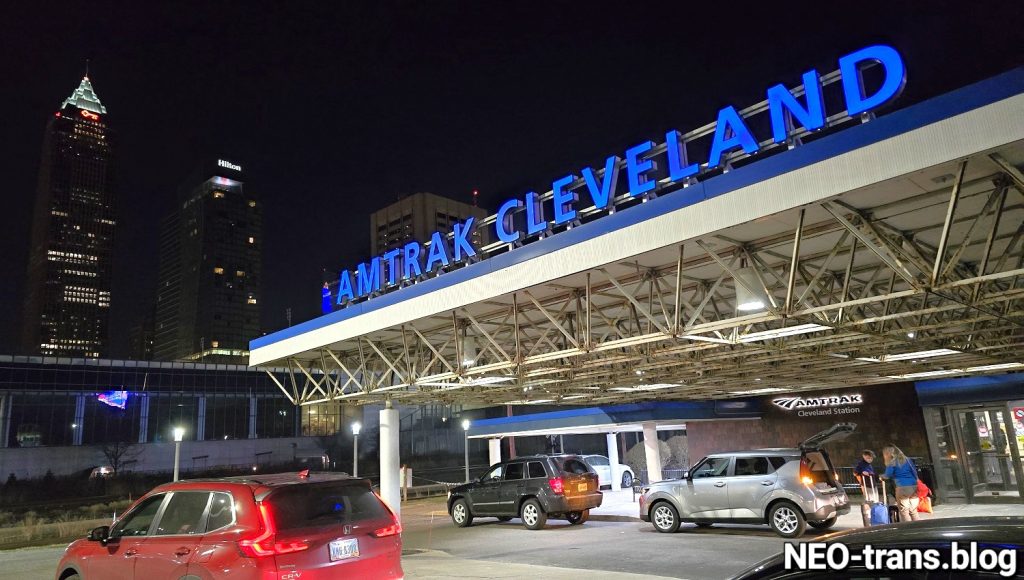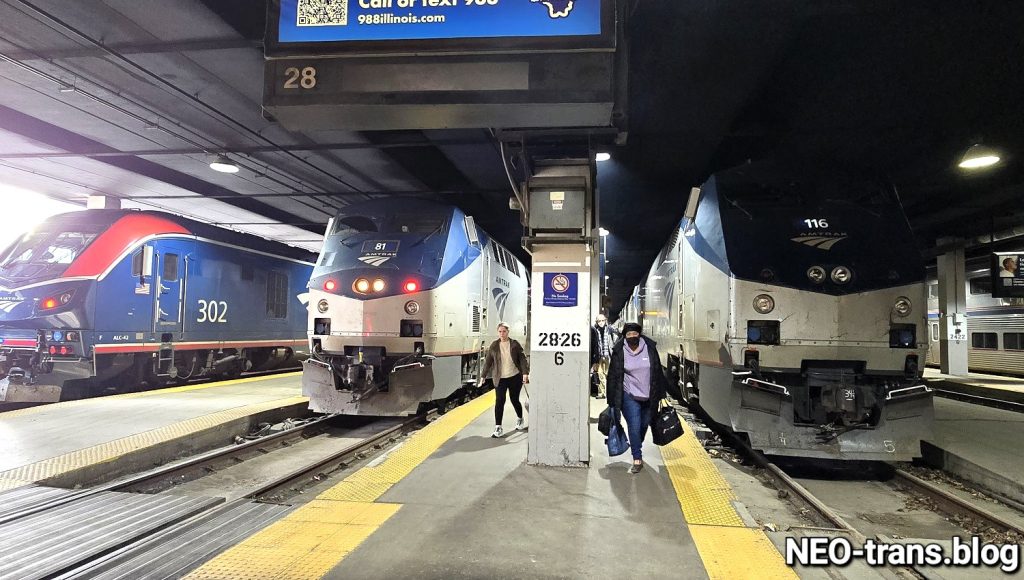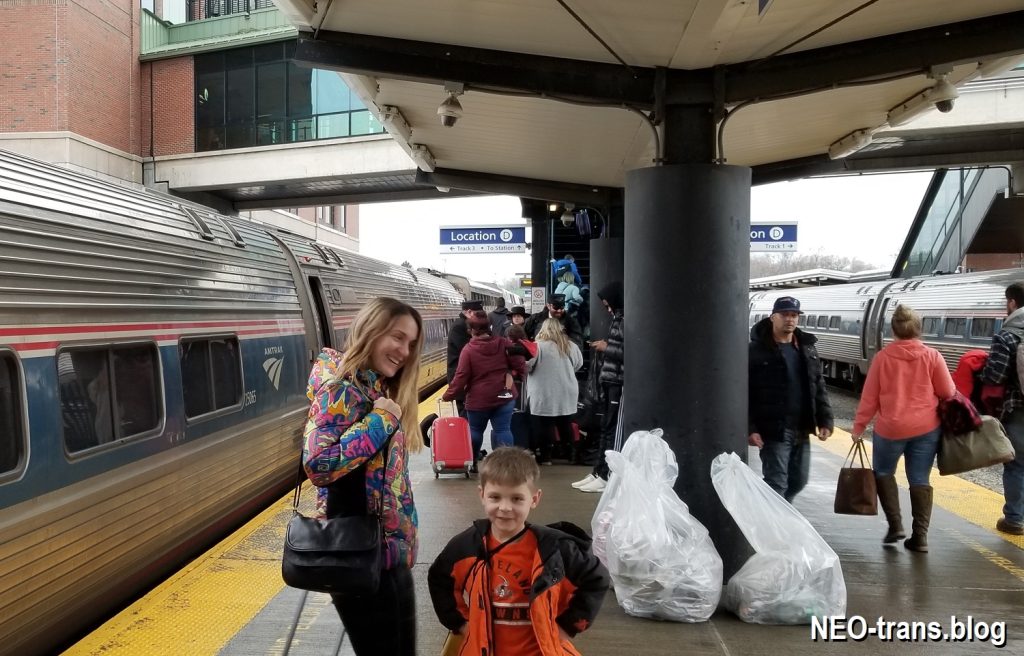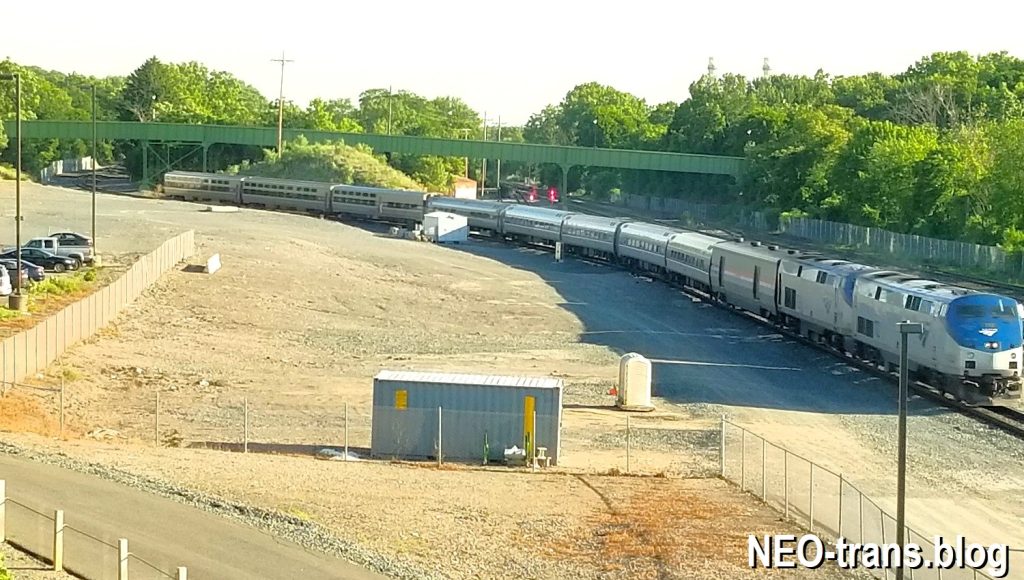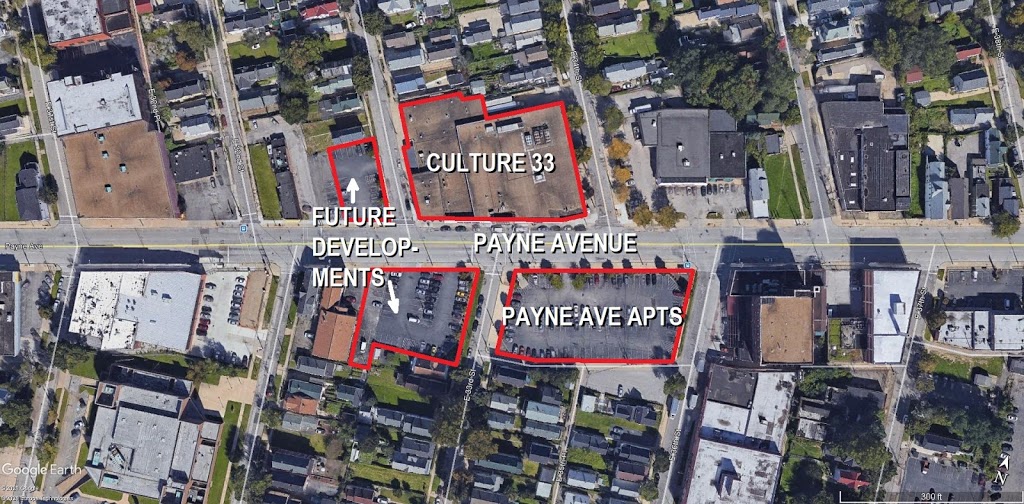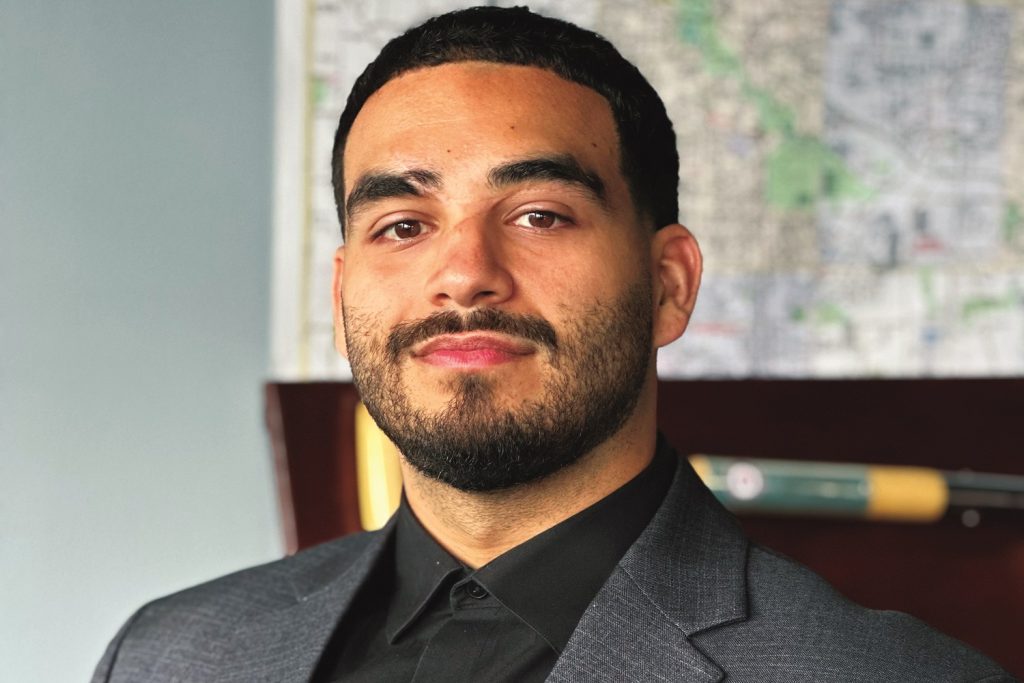Advocates for Amtrak’s busiest train offer ideas
According to the latest data from national passenger railroad Amtrak, America’s most heavily used passenger train passes through Cleveland each night. And it, plus the other Amtrak route through Cleveland, were the two fastest-growing long-distance routes in terms of ridership last year. But getting more ridership or better departure times at Cleveland will be difficult absent new federal policies, said a nonprofit rail advocacy coalition.
Last year, Amtrak broke its systemwide ridership record set in 2019, carrying 32.8 million people. While that data was already shared in December, a route-by-route fact sheet wasn’t publicized until this week.
That route-specific data showed the Chicago-New York City/Boston Lake Shore Limited, with one eastbound and westbound train daily, carried 398,420 passengers last year. That’s the equivalent of a half-dozen fully loaded Boeing 737 jets per day. The ridership growth was an increase of 13.5 percent over the previous year, Amtrak data showed.
None of the other 14 long-distance trains carried more passengers. And perhaps more impressively, the only short-distance routes that carried more passengers than the single-train Lake Shore Limited offered three or more daily trains in each direction. Amtrak’s fiscal year and ridership reports cover Oct. 1 to Sept. 30 each year.
The other Amtrak train route through Cleveland last year, the Chicago-Washington DC Capitol Limited, enjoyed the largest ridership gain among all long-distance trains, growing 29.2 percent. It carried 163,136 passengers in 2024 on its daily eastbound and westbound trains.
Since combining with another service from Washington DC to Miami, FL on Nov. 10, 2024, the Capitol Limited has been renamed the Floridian. It shares the Lake Shore’s route between Cleveland and Chicago but often runs late because it travels more than 2,000 miles and makes more station stops (44) than any other Amtrak train.
The Lake Shore also shares its path with 11 other daily Amtrak round trips on some or all of the Buffalo-New York City Empire Corridor, adding another 2 million riders in 2024. But the Lake Shore’s ridership accounts only for those passengers riding its single daily round trip.
On March 14, NEOtrans rode the Lake Shore from Cleveland to Chicago. An Amtrak employee on board told NEOtrans that 880 people had bought tickets to ride that westbound train which had a total of 363 accommodations (beds and coach seats) available for booking.
The beds and especially the coach seats see a lot of turnover along the way as passengers get on and off the Lake Shore at its 23 station stops. That includes five station stops in Ohio — Cleveland, Elyria, Sandusky, Toledo and Bryan.
The passenger turnover meant that each accommodation on the May 14 westbound train was used on average by nearly 2.5 people. Only 10 percent of travelers rode the train from one end of the line to the other which is typical for the Lake Shore, according to Amtrak.
While Amtrak could add more cars to the train (and does so during peak travel periods), it may not add many more riders. The reason is it wouldn’t offer a variety of departure time options to tap into more of the travel market and potentially attract significantly more customers.
The Amtrak employee, with access to real-time train data, said a total of 107 passengers boarded the pre-dawn Lake Shore and Floridian westbound trains at Cleveland on March 14. One can imagine what the boarding numbers at Cleveland might be like if a convenient daytime service was offered here, said Lakeshore Rail Alliance spokesman Bill Hutchison of Wickliffe.
“The high ridership is in spite of middle of the night ‘service’ to the Lake Shore’s biggest mid-route city,” he said. “Adding another train would be a big success.”
The alliance, comprised of passenger railroad advocacy organizations from Chicago to the East Coast, including All Aboard Ohio, has proposed a relatively simple near-term solution — split the Lake Shore into two separate trains over the entire route, scheduled at least several hours apart from each other.
The train is actually comprised of two trains — one from Boston and another from New York City that combine westbound at Albany, NY for the remaining 818-mile trip to Chicago. The process is reversed eastbound, with the single train splitting into two trains – one bound for Boston and the other to New York City.
Long term, the Lakeshore Rail Alliance proposes operating a half-dozen trains each day each way between Chicago and New York City, traveling at speeds of more than 100 mph beyond just the 90-mile Poughkeepsie-Schenectady, NY portion where they now cruise at up to 110 mph.
Amtrak says that any new services that increase its subsidy requirements would have to be funded by states or other non-federal authorities. Federal law says that new or existing Amtrak routes of 750 miles or less are the fiscal responsibility of states and non-federal entities. There is no expansion policy for routes longer than 750 miles like the Lake Shore.
“Current law really has little or no provision for what should be national or multi-state priorities,” Hutchison said. “It’s mostly state-driven and if a service isn’t on their radar, it won’t happen. As important as the Lake Shore is from a national perspective, it’s not a priority for any state it passes through.”
Ohio is undertaking service development plans for the Cleveland-Toledo-Detroit (160 miles) market plus Cleveland-Columbus-Dayton-Cincinnati (255 miles) travel corridor. The Northeast Ohio Areawide Coordinating Agency has so far unsuccessfully sought federal funding for Cleveland-Toledo-Chicago (340 miles) and Cleveland-New York City (600 miles) service development plans.
While the Trump Administration has proposed privatizing Amtrak with few specifics, the Lakeshore Rail Alliance says some significant policy changes would have to be made first. They suggested a variety of ideas for doing so in a new report the group issued.
“If we want to unleash private-sector entrepreneurship in the passenger rail sector, we need to treat passenger rail like we do highways and aviation — the government builds and owns the infrastructure, the private sector does the rest,” Hutchison said.
The infrastructure-user relationship is reversed at Amtrak, where a government-owned train uses private-sector owned, financed, managed, secured and insured infrastructure. Amtrak pays the landlord’s profit margins, interest, no-fault liability insurance and other costs that would not exist if the rail infrastructure was publicly owned.
In Europe, the alliance noted, private consortia compete with each other while using publicly owned infrastructure, thus lowering costs to shippers and travelers. In the USA, the freight railroads that own their tracks have the final say on who uses those tracks and can hold shippers and travelers hostage in the common absence of a competitor.
“Amtrak’s Lake Shore Limited is a poster child for the arguments in our white paper,” Hutchison added. “Its consistently high ridership points to a need for more service but Amtrak is wholly reliant on others to initiate service. There is no way for it to add service on its own or any incentives to do so.”
END

